This
post was originally published on
this sitehttp://chriskresser.com/

Depression and postpartum depression—often abbreviated as PPD—still carry a stigma that hinders optimal prevention and treatment. Unfortunately, most moms who go back to their doctors for postpartum check-ups are given little more than some general mental-health advice and perhaps a prescription for an antidepressant. Read on to learn about the potential causes of PPD, the downside of antidepressants, and nine natural treatments that could help.
Use these links to skip ahead to another section of this article:
The Conventional Model of Depression Isn’t as Simple as You May Think
I have discussed depression and anxiety quite a bit, but I haven’t covered postpartum depression before in much detail. This article will review what conventional medicine gets wrong about depression, what unique factors might contribute to postpartum depression, and what natural alternatives to antidepressants may be effective.
Conventional medicine describes depression as a simple chemical imbalance, where, for reasons mostly out of your control, your brain isn’t producing enough of these “feel good” neurotransmitters:
- Serotonin
- Dopamine
- Norepinephrine
Selective serotonin reuptake inhibitors (SSRIs) are the most widely prescribed class of antidepressants. SSRIs are designed to increase serotonin levels in the brain by preventing its reabsorption. The solution sounds straightforward—take an SSRI to fix a brain chemical imbalance, and you’ll feel happier. Unfortunately, the data just do not support this overly simplistic model.
In his book Blaming the Brain: The Truth about Drugs and Mental Health, Dr. Elliot Valenstein, a professor emeritus of psychology and neuroscience at the University of Michigan, explains how the chemical imbalance model of depression just doesn’t hold up to scrutiny:
- Reducing serotonin, dopamine, and norepinephrine doesn’t produce depression in humans, even though it appears to in animals
- Drugs that raise serotonin and norepinephrine levels, like amphetamines and cocaine, do not alleviate depression
- The majority of depressed patients don’t have low serotonin levels; only about 25 percent actually do
In some cases, antidepressants have no clinically meaningful advantage over placebos. (2, 3) First-line pharmaceutical treatment for depression only works about half the time. (4, 5) When antidepressants do work, it takes weeks for patients to feel the effects. Furthermore, because of how they impact the brain, antidepressants can make depression relapse more likely once medication is stopped. (6, 7) (This long-term customer model is music to the pharmaceutical companies’ ears.)
Rather than viewing depression as a chemical imbalance, the evidence better supports an inflammatory-cytokine model of depression.
Before I get into the underlying causes of depression, let’s look more closely at a specific type of depression unique to new mothers—postpartum depression, or PPD.
Back to Top
The Baby Blues vs. Postpartum Depression
Postpartum depression is often misrepresented as the “baby blues” on one end of the depression spectrum, with postpartum psychosis on the other end. But PPD and the so-called baby blues aren’t the same thing. These are three distinct conditions, and there are some big differences among them.
The baby blues affect up to 75 percent of mothers in the first 10 days following birth, but the symptoms—usually mood swings and bouts of crying—are mild and don’t last long.
Postpartum depression lasts much longer and is more deeply felt than the baby blues and can set in at any time during the first year following birth. Women with PPD may have trouble connecting with their baby, have doubts about their parenting abilities, develop sleep issues beyond the lack of sleep often associated newborn care, and may lose interest in activities they used to enjoy.
Postpartum psychosis is a psychiatric emergency. These mothers may have thoughts of hurting themselves or their baby and can develop hallucinations.
PPD is generally diagnosed through a screening questionnaire, most often the Edinburgh Postnatal Depression Scale (EPDS) or the Postpartum Depression Screening Scale (PDSS). Most studies estimate that postpartum depression affects 10 to 15 percent of postpartum women, but some estimates approach 30 percent. (8, 9)
Back to Top
How to Recognize Postpartum Depression in Yourself or a Loved One
The list of postpartum symptoms includes the following: (10)
- Feeling sad, hopeless, or overwhelmed
- Crying more than usual
- Worrying or feeling anxious
- Feeling irritable or restless
- Sleeping too much or too little
- Having trouble concentrating
- Feeling anger or rage
- Losing interest in once-enjoyable activities
- Frequent headaches or other body aches
- Eating too little or too much
- Having trouble bonding with your baby
- Doubting your parenting ability
- Withdrawing from or avoiding friends and family
Despite these seemingly hard-to-miss signs, postpartum depression isn’t always obvious. To the outside world, a mother may appear perfectly content while suffering on the inside. Many of these symptoms, like worrying or not eating well, are experienced by most mothers of newborns. But PPD is far more intense and drawn out. The last symptom on the list—withdrawing from or avoiding friends and family—is perhaps the most important. Too many stories of postpartum depression have ended tragically, and too many times loved ones said afterward, “I didn’t even know she was suffering.” If a new mother goes out of her way to physically avoid others—discouraging visitors, not wanting to chat or email, or not leaving home—it’s a bit more apparent that she may have an issue with PPD. But often, this “withdrawal” is emotional, not merely physical (and attributable to having a newborn), so it may be easy for a friend or relative to miss—and easy for a PPD sufferer to hide.
If someone you’re close to is a new mother, listen between the lines. If she says she is completely in love and enjoying every minute, give her the opportunity to open up and share the not-so-good parts of her experience. She might be feeling too guilty to disclose the unpleasant feelings of motherhood upfront.
Back to Top
What Causes Postpartum Depression?
If low serotonin isn’t the primary cause or symptom of postpartum depression, then what is? Some possible answers may be found among the five the biggest contributors to PPD: hormonal imbalances, poor nutrition, stress, thyroid conditions, and inflammation.
1. Hormonal Imbalances
Women experience a remarkable breadth of hormonal changes during pregnancy, labor and delivery, and postpartum. During pregnancy, progesterone levels rise to 20 times their pre-pregnancy levels, and estrogen levels climb even higher, reaching 200 to 300 times higher than baseline by 20 weeks of pregnancy. (11) Estrogen can increase the production of GABA, an antianxiety and anti-pain neurotransmitter that promotes relaxation and “feeling good,” and progesterone stimulates the GABA receptor in the brain.
After delivery, a dramatic drop in progesterone and estrogen may contribute to the moodiness of baby blues. A woman’s brain and ovaries must readapt to produce the body’s needed estrogen and progesterone again, all while dealing with a drop in the pregnancy hormone human chorionic gonadotropin (or hCG) and an increase in oxytocin (especially if breastfeeding). If a woman’s own endocrine system doesn’t properly reestablish control of hormone production, postpartum depression can follow. (12, 13)
2. Nutritional Deficiencies
As a pregnancy progresses, the increasing energy demands of the fetus can take a toll on a mother-to-be, particularly if her diet is inadequate; pregnant women are extra susceptible to nutrient deficiencies. Furthermore, morning sickness (which typically ends in the second trimester), as well as food aversions and cravings that can come and go throughout a pregnancy, can put a damper on healthy eating. Specifically, there’s evidence that not getting enough vitamin D, iron, and DHA and EPA can affect the mood and cognitive health of the mother.
Vitamin D
Observational studies have found correlations between a low level of vitamin D during pregnancy and a greater risk of developing postpartum depression. (14, 15, 16, 17) Spending some time in the sun each day can help keep vitamin D levels adequate, but if that isn’t possible due to climate or career, consider a vitamin D3 supplement if levels drop below 35 ng/mL. (And vitamin D is also very important for a baby’s development in utero. If you are pregnant or are thinking of becoming pregnant, talk to your practitioner about the importance of safe supplementation with a quality prenatal vitamin.)
Iron
If pregnant women don’t have adequate iron stores, the blood loss from birth could deplete iron levels, increase exhaustion, and contribute to postpartum depression. One study found that increasing ferritin levels (a measure of iron storage) in non-anemic pregnant women decreased the chance of postpartum depression later on, indicating that adequate iron levels and iron storage are important. (18)
EPA and DHA
Some varieties of prenatal vitamins now include an extra EPA/DHA pill to boost omega-3 intake. Studies have shown that low levels of omega-3 fatty acids are associated with depression, at least in non-pregnant populations. (19) But, clinical trials using omega-3 supplements have shown mixed results and, in some cases, show no benefit over placebo in treating depression, including the largest trial, conducted on nearly 2,400 pregnant women. (20)
Rather than rely on omega-3 supplements, I encourage pregnant women to consume cold-water, fatty fish a couple times of week if possible, as fish intake during pregnancy is associated with lower risk of postpartum depression. (21) Unfortunately, because of the somewhat misguided concerns about mercury levels in fish, women often shy away from fish during pregnancy. But as long as you are avoiding fish varieties like shark, swordfish, tilefish, and king mackerel, as well as raw fish, the high selenium content in most fish mitigates the risk of mercury toxicity. (Selenium binds with mercury and deactivates it.)
3. Stress
Bringing home a newborn baby is challenging—a beautiful experience, yes, but challenging. Without a reliable support system, the responsibilities of motherhood—combined with sleep deprivation and breastfeeding issues that can arise in the early days and weeks—can all be overwhelmingly stressful and lead to depression.
In the short term, stress can actually benefit cognitive performance and teach the brain to adapt more effectively to stressors in the future. (22, 23) Chronic stress, on the other hand, reduces synaptic plasticity, which means the brain has more trouble learning to adapt and respond appropriately to stressful situations. Pregnancy is accompanied by sustained high levels of glucocorticoid stress hormones, and higher cortisol levels are associated with higher risk of depression. (24, 25)
Chronic stress can also lead to disrupted hypothalamus–pituitary–adrenal (HPA) axis function, another symptom common in depressed patients. The HPA system undergoes many changes during pregnancy, and the more drastic shifts have been linked to the development of PPD. (26, 27, 28) In fact, in one study, up to 80 percent of women post-birth exhibited impaired HPA negative feedback (though not all developed postpartum depression). (29)
4. Thyroid Issues
An estimated 20 million Americans have some form of thyroid disease, and women are disproportionately affected. (30) Up to 23 percent of postpartum women experience thyroid dysfunction, and one in 12 develops an autoimmune thyroid condition like Hashimoto’s disease. (31) Despite the levels of thyroid dysfunction in women, thyroid panels before and after pregnancy are rarely done. The typical thyroid lab panel only tests for T4 and thyroid-stimulating hormone (TSH), but a full panel should include:
- Thyroid hormones T3 and T4
- TSH
- Reverse T4 and reverse T3
- Thyroid antibodies against TPO and TG
The link between thyroid issues and depression has long been recognized. (32) Symptoms for hypothyroidism—extreme fatigue, weight gain or inability to lose weight, mood swings, and brain fog—overlap with PPD symptoms, easily leading to misdiagnosis. A woman might have postpartum depression and hypothyroidism, triggered by stress plus the drop in hormones experienced after birth. But instead of running thyroid panels and testing hormones, most conventional doctors will prescribe an antidepressant and hope for the best. Functional Medicine practitioners, however, embrace the “Test, don’t guess” approach—and we will work with you to get to the root of health issues.
5. Inflammation
Systemic inflammation underlies nearly all modern diseases, including Alzheimer’s, autoimmune disease, allergies, and more. Although not limited to just postpartum women, inflammation may be at the root of depression, too. Some of the evidence to support this claim includes the following:
- Depression often accompanies acute, inflammatory illnesses (33)
- Higher levels of systemic inflammation increase the risk of developing depression (34)
- Markers of inflammation often normalize following remission of depression (35)
SSRIs, in addition to increasing serotonin levels, can reduce the production of pro-inflammatory cytokines like TNF-alpha, IL-1, and interferon gamma, while increasing anti-inflammatory cytokines like IL-10. (36, 37) This anti-inflammatory mechanism could explain why SSRIs relieve depressive symptoms in some individuals.
Postpartum women may engage in pro-inflammatory behaviors, such as broken sleep, consuming processed foods that are loaded in inflammatory industrial seed oils and sugar, and general stress, all of which make them vulnerable to inflammation-induced depression.
Back to Top
Antidepressants: They Don’t Work for Everyone
Antidepressants are cash cows for the pharmaceutical companies. Nearly 13 percent of Americans over the age of 12 take an antidepressant. (38) The global market for antidepressants exceeds $11 billion. (39) That’s a lot of money for a type of drug with questionable effectiveness and high incidence of side effects.
Some clinical trials have demonstrated benefits over placebo, but on average, antidepressants show no benefit over placebo. (40) A 2017 meta-analysis states that: (41)
SSRIs versus placebo seem to have statistically significant effects on depressive symptoms, but the clinical significance of these effects seems questionable and all trials were at high risk of bias.
Although two earlier meta-analyses agreed that SSRIs performed no better than placebo for mild and moderate depression, antidepressants can often mitigate severe depression (42, 43). Antidepressants can be life-saving for some, and these pooled analyses can’t tease out individual responses, which can vary tremendously from person to person. For treatment of PPD, antidepressants have yielded similarly mixed results. (44)
More than half of all antidepressant users experience one or more of the common side effects, including:
- Diarrhea
- Nausea
- Anorexia
- Sweating
- Forgetfulness
- Bleeding
- Seizure
- Anxiety
- Mania
- Sleep disruption
- Sexual dysfunction
Many users also report “anti-motivational syndrome,” where emotional responses, both good and bad, are blunted. If the benefits of antidepressants clearly outweigh the risks, they might be an option for some women, but they are not the miracle, cure-all drug for everyone.
Breastmilk and Antidepressants—Is There a Concern?
Some moms are worried about antidepressants making their way into breastmilk, which is understandable. Although many SSRIs, Zoloft in particular, are considered to be compatible with breastfeeding, I take that phrase with a huge grain of salt. (45) As mentioned earlier, antidepressants can change the brain of an adult significantly. In adolescence, extra caution is given to antidepressants due to their association with increased suicidal thoughts and behavior in some cases. (46) We just don’t know the short-term or long-term effects on breastfeeding infants. (47)
In sum, antidepressants are sometimes ineffective, they can cause side effects, and they may lead to unwanted brain changes. If you’re uncomfortable with the idea of taking medication, read on to learn about how you can prevent or alleviate the symptoms of postpartum depression with natural treatments.
An Important Note: If you’re currently taking antidepressants, consult with your doctor before making any decisions, and don’t stop taking your medication without medical support.
Abruptly changing your dosage can cause disruptive and even dangerous side effects. Tapering off an SSRI can take weeks (between six and eight), but in my experience, the process is even longer. If you’ve been taking SSRIs for years, you may need months to slowly and safely get the medication out of your system. Perhaps surprisingly, I’ve noticed it takes much longer to completely taper off from the lowest dose than it does to go from the highest dose down to the lowest.
For more information on this topic, I highly recommend Dr. Peter R. Breggin’s book, Psychiatric Drug Withdrawal: A Guide for Prescribers, Therapists, Patients and Their Families.
Back to Top
Nine Ways to Care for Postpartum Depression with Natural Treatments
If you or a loved one is suffering from PPD or is at risk, natural remedies may be beneficial and can offer powerful alternatives to prescription antidepressants. Many of the remedies I’ll discuss below can also be incorporated before birth, especially for those with a history of depression or postpartum depression.
1. Start Seeing a Psychotherapist
Compared to antidepressant medication, psychotherapy is cost effective, well tolerated, and generally more effective for treating depression, especially in the long term. (48) A meta-analysis and review examined 28 trials and reported that psychotherapy intervention during pregnancy significantly reduced the number of women who developed PPD. (49)
Specifically, mindfulness-based cognitive therapy (MBCT) and cognitive behavioral therapy have great track records of mitigating postpartum depression.
- Cognitive therapy helps prevent postpartum depression. In pregnant women with a history of depression, MBCT decreased depression relapse compared to other treatments, including antidepressants. (50) MBCT is also a viable treatment option for postpartum depression.
- Cognitive therapy helps treat postpartum depression. In 2018, a meta-analysis reviewed 20 randomized controlled trials that compared the effectiveness of BCT against typical treatment methods (like medication). Women who underwent psychotherapy saw greater improvements in their depression symptoms in both the short and long term than women who received other treatments. (51)
- Cognitive therapy is superior to antidepressant treatment. In one study, MBCT therapy worked better than both SSRI treatment and a combination of SSRI and MBCT treatment. (52) In another study, adding an SSRI to psychotherapy treatment offered no benefit beyond psychotherapy alone. (53)
Unfortunately, a major barrier to getting psychotherapy treatment is the perceived “difficulty” of the process, from researching and finding a therapist to making (and keeping) an appointment. (54) Even under less stressful circumstances, it isn’t always easy to ask for help—but for a new mom experiencing the feelings of hopelessness that accompany PPD, it’s especially challenging. Navigating health insurance, locating a provider, and simply trying to find time to make the necessary phone calls can seem overwhelming.
Before giving up, consider the following:
- Start with baby steps. Break down the process of making an appointment into several steps you can complete over the course of a couple days. For example, first identify providers that fit your criteria, and then set aside a few different blocks of time to call them.
- Bring your baby. If you don’t have someone to watch your baby, many therapists and psychologists are more than willing to see you with baby in tow.
- Give it a few sessions. Don’t ditch your provider after one session. Try a few meetings before deciding if it’s a good fit.
- Stop if it doesn’t feel right. On the other side of the spectrum, don’t be afraid to try a different therapist. You might not click with the first, or even the second, provider. But that’s okay. You’ll find the right person.
- Consider telephone-based or internet-delivered psychotherapy. If leaving the house just isn’t an option, this type of psychotherapy can also be effective. (55, 56)
2. Get Regular Exercise
During the first six to eight weeks after delivery, you should be resting and taking care of yourself and your new baby, especially if you’re recovering from a Caesarian section or other pregnancy complications. But when you get the green light from your healthcare provider, taking up an exercise routine could help reduce the risk of, and even treat, postpartum depression.
In two randomized controlled trials, 12 weeks of an exercise intervention for postpartum women reduced the EPDS score (measure for depression) compared to controls. (57, 58) In another study, moderate exercise five times per week resulted in greater remission rates compared to antidepressant medication. (59) As long as you start off slow and exercise safely, the only side effect of exercise is good health.
You might be asking, “When can a new mom find time to exercise?” It’s a valid question. A sustainable and enjoyable exercise routine is the one you’re most likely to stick with, as adherence to exercise interventions in studies (and in real life) can be quite low. (60) But do what other moms do, and get creative:
- Easiest of all: take a stroller walk with your baby, and pick up the pace as you get your energy back
- Try a Mommy and Me yoga or other exercise class, where babies are part of the routine
- Buy a subscription to postpartum exercise videos you can stream from home
- Dance (safely) with your baby
- Workout during baby’s first nap of the day, to make it a top priority
And remember that before you know it, your baby will be an active toddler—a workout in itself!
3. Use Light Therapy
Our ancestors spent most of their waking hours outdoors, a lifestyle in stark contrast to modern society. Seasonal affective disorder tends to peak during winter, when sunlight exposure bottoms out. (61) Harnessing the mood-improving effects of sunlight, light therapy has been proven effective for treating both seasonal affective disorder and non-seasonal-related depression. (62) In some cases, combining light therapy with antidepressants was no more effective than light therapy alone. (63)
Typically, light therapy involves exposure to a bright light for 10 to 20 minutes per day (to reach about 10,000 lux units of light) in the morning. Light therapy is believed to positively affect mood, sleep, circadian rhythms, and HPA axis activity. (64) Two studies have used bright light as a treatment for perinatal and/or postpartum depression. Both studies demonstrated clinical improvement with light therapy, with up to 75 percent reduction in depression. (65, 66)
Some minor side effects can accompany light therapy, including headache, eye strain, nausea, and agitation, but these effects are mild and usually transient. Critics of light therapy question its efficacy because a proper placebo doesn’t exist—participants will know whether or not they are being exposed to bright light. But even so, does that matter if light therapy yields positive results?
4. Try Acupuncture
Acupuncture also faces criticism for lack of double-blind, placebo-controlled trials. Acupuncture may improve mood by decreasing stress-induced cortisol release. (67) The results of acupuncture for the treatment of depression and postpartum depression are mixed. (68, 69, 70)
In a review of acupuncture for depression, there was no evidence that medication yielded better outcomes than acupuncture. (71)
Generally well tolerated with few side effects, acupuncture from a competent, licensed acupuncturist may be worth pursuing for postpartum depression. However, more robust studies are needed.
5. Start Taking Probiotics
The gut microbiome interacts with and influences the body’s organ and systems, including: (72)
The brain and gut communicate with each other. The vagus nerve, responsible for parasympathetic processes like heart rate, runs from the brain to your visceral organs. (73) In return, gut bacteria produce neurotransmitters that communicate with the brain. (74) Disrupted gut microbiomes have been associated with psychological disorders, including depression and anxiety. (75) Specifically, recent evidence suggests that the microbiota may regulate serotonin synthesis and secretion. (76) In two small studies, the gut bacteria of individuals with depression were shown to have more pro-inflammatory gut bacteria and less anti-inflammatory gut bacteria than control groups. (77, 78)
When administered to mice, the anti-inflammatory probiotic L. rhamnosus reduced corticosterone and anxious and depressive symptoms. (79) In one small human trial, pregnant women who supplemented with L. rhamnosus through six months postpartum reported lower depression and anxiety scores compared to placebo groups, indicating the therapeutic potential of probiotics for postpartum depression. (80)
We know the gut microbiome drastically shifts during pregnancy, and if that shift ventures towards gut dysbiosis, it could predispose certain women to developing PPD. (81) Take care of your gut by consuming bone broth, fermented foods, and kefir or yogurt, if tolerated.
6. Look into Bioidentical Hormone Therapy
After delivery, women experience dramatic drops in progesterone and estrogens, both of which influence activity at the GABA “feel-good” receptor in the brain. Some data suggest that low progesterone following birth is correlated with the baby blues, but other data haven’t supported any clear link between hormone concentrations and postpartum mood. (82, 83)
Bioidentical progesterone treatment may be a viable alternative to traditional antidepressants. Bioidentical progesterone is not chemically identical to the synthetic progestins found in birth control pills, and most obstetricians and gynecologists are unfortunately unfamiliar with the former as a treatment option. In the 1980s, two studies led by Dr. Katharine Dalton demonstrated the effectiveness of bioidentical progesterone for treating PPD, with remission rates of less than 10 percent. Since the 1980s, progesterone therapy for PPD has been widely used by health professionals trained in Natural Procreative (NaPro) Technology, a women’s health initiative that strives to understand and cooperate with a woman’s reproductive and gynecological health. Progesterone can help alleviate some symptoms of depression in as little as one injection almost immediately. Unfortunately, outside of the NaPro literature, further randomized controlled studies using bioidentical treatment for postpartum depression have yet to be published.
Related to bioidentical progesterone, allopregnanolone, a naturally occurring metabolite of progesterone, has been studied in two clinical trials for PPD treatment. (84, 85) Much like bioidentical progesterone, allopregnanolone showed rapid mood-boosting effects after just one drug infusion. As these trials were very recent, in 2017 and 2018, I am intrigued at the prospect of a fast-acting, more natural option for postpartum depression.
7. Get More Sleep and Rest
More than one-third of American adults admit to not getting enough sleep, and I would bet that number is even higher among new moms. (86) Large meta-analyses have found associations between sleep disturbances and depression in both the general adult population and in postpartum moms. (87, 88) Sleep depression and depression can create a vicious cycle, as each contributes to the other.
Getting enough sleep can seem impossible for new moms, especially in modern Western societies where women have less support than in previous generations. Sleeping when the baby sleeps is not always an option, but aim for it whenever possible.
If you are breastfeeding, not on any medications with drowsy side effects, and a nonsmoker, co-sleeping and side-lying nursing might be good options that offer more sleep. Despite what mainstream organizations want to claim, co-sleeping can be safely done. Check out the La Leche League’s Safe Sleep Seven to find out how to create a safe sleeping environment for you and your baby.
8. Try Supplementing with St. John’s Wort
Many natural health communities tout St. John’s wort as a beneficial treatment for depression, as the herb has been shown to have mood-boosting activity at the serotonin and “feel-good” GABA receptors. (89) In double-blind, placebo-controlled trials, St. John’s wort often performs better than antidepressant medications at reducing depression symptoms, with up to 10 times fewer reported side effects. (90, 91, 92, 93) Of note, St. John’s wort should not be taken concurrently with SSRIs, nor should it be combined with light therapy because it may increase the body’s sensitivity to light.
However, if you are breastfeeding, St. John’s wort might not be the best choice. Even though it is found in breastmilk at “undetectable to low levels,” breastfeeding infants whose mothers supplemented with St. John’s wort had higher instances of drowsiness, colic, and lethargy. (94, 95)
Talk with your provider about other supplements that might be useful for postpartum depression:
- Sam-e, which may be especially helpful for women with MTHFR mutations
- Vitamin D
- Motherwort
- Rhodiola
- Eleutherococcus
- Saffron (96, 97)
- Chamomile (98)
9. Set Up a Personal Support Network
Being a new mom can be isolating. In other cultures, women are surrounded and cared for by other women and moms after giving birth. In modern Western societies, extended family often lives far away, and the concept of a “village” helping to raise children is disappearing. Couple that isolation with inadequate parental leave policies and poor sleep, and you have a recipe for depression. Ideally, a postpartum woman would have an extensive support network from friends and family, a generous amount of worry-free leave from her job, and multiple home visits from a medical practitioner as she recovers and adjusts to her new life. (And that’s how it is in many countries around the globe—but not in the United States.)
Most American women only have one checkup four to six weeks after giving birth, although the American College of Obstetricians and Gynecologists now recommends that postpartum care be an ongoing process with multiple follow-up appointments. See if your provider is willing to follow a more holistic care model, which would include:
- Multiple follow-ups post-birth
- Blood work to monitor nutritional stores (beyond iron) and hormone statuses both during and after pregnancy
- Full thyroid blood panel during and after pregnancy
- Physical therapy referral, if needed for pelvic floor dysfunction or diastasis recti (separation of the abdominal muscles)
- Mental health referral, if needed
If you are pregnant, set up a support system as best you can before birth. Here are a few tips to help you get started:
- Accept any and all offers of help. Have a list ready for errands that friends and family can run or chores they can do.
- Have a freezer meal baby shower. Get everyone together to help you prep dozens of nutrient-dense meals and snacks so you won’t be tempted to eat easily accessible processed foods.
- Begin a meditation practice. The Headspace app can help you get started.
- Identify nearby lactation consultants for support if you plan to breastfeed.
Back to Top
I want to close this article with assurance that if you (or a loved one) are suffering from postpartum depression, you are not alone. I urge you to please speak with your healthcare provider immediately about these and other options available for you to get help.
Now I want to hear from you. Have you dealt with postpartum depression? What treatments did you find helpful? Let me know in the comments.
The post How to Ease Symptoms of Postpartum Depression with Natural Treatments appeared first on Chris Kresser.


 Here’s an update to my December 2013
Here’s an update to my December 2013 








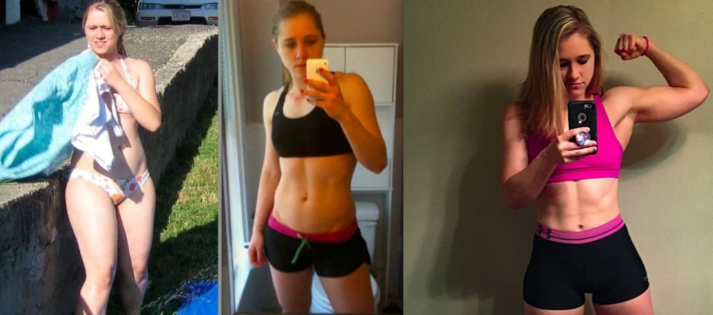




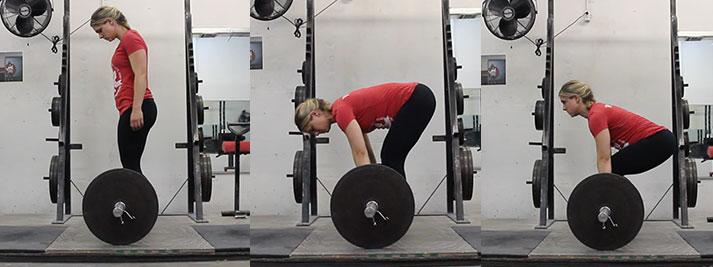
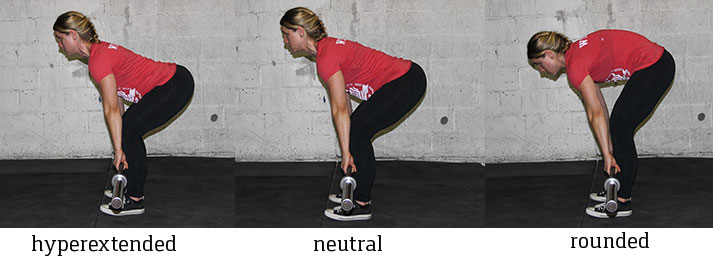
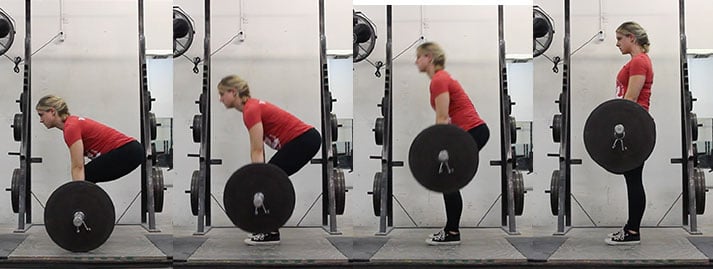

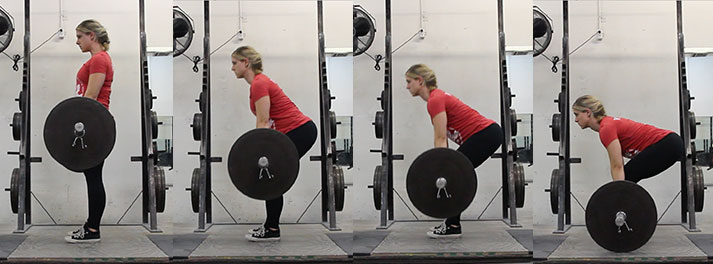


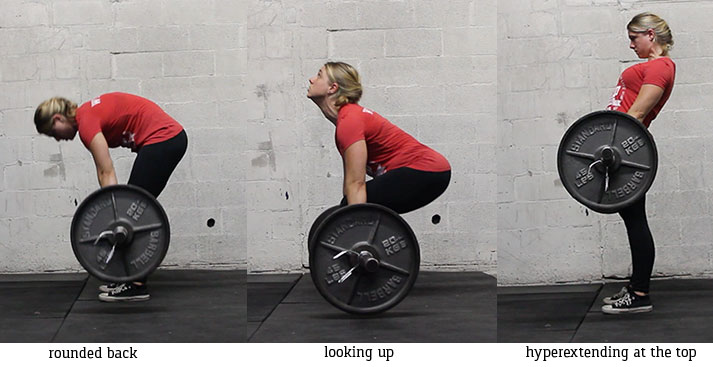
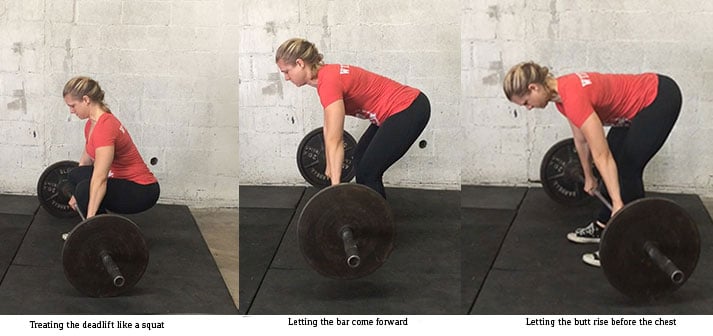


 For now classes are 6pm and 640pm at 2840 Wildwood st in the Boise Cloggers studio.
Book your class NOW!
click this ==>
For now classes are 6pm and 640pm at 2840 Wildwood st in the Boise Cloggers studio.
Book your class NOW!
click this ==>








